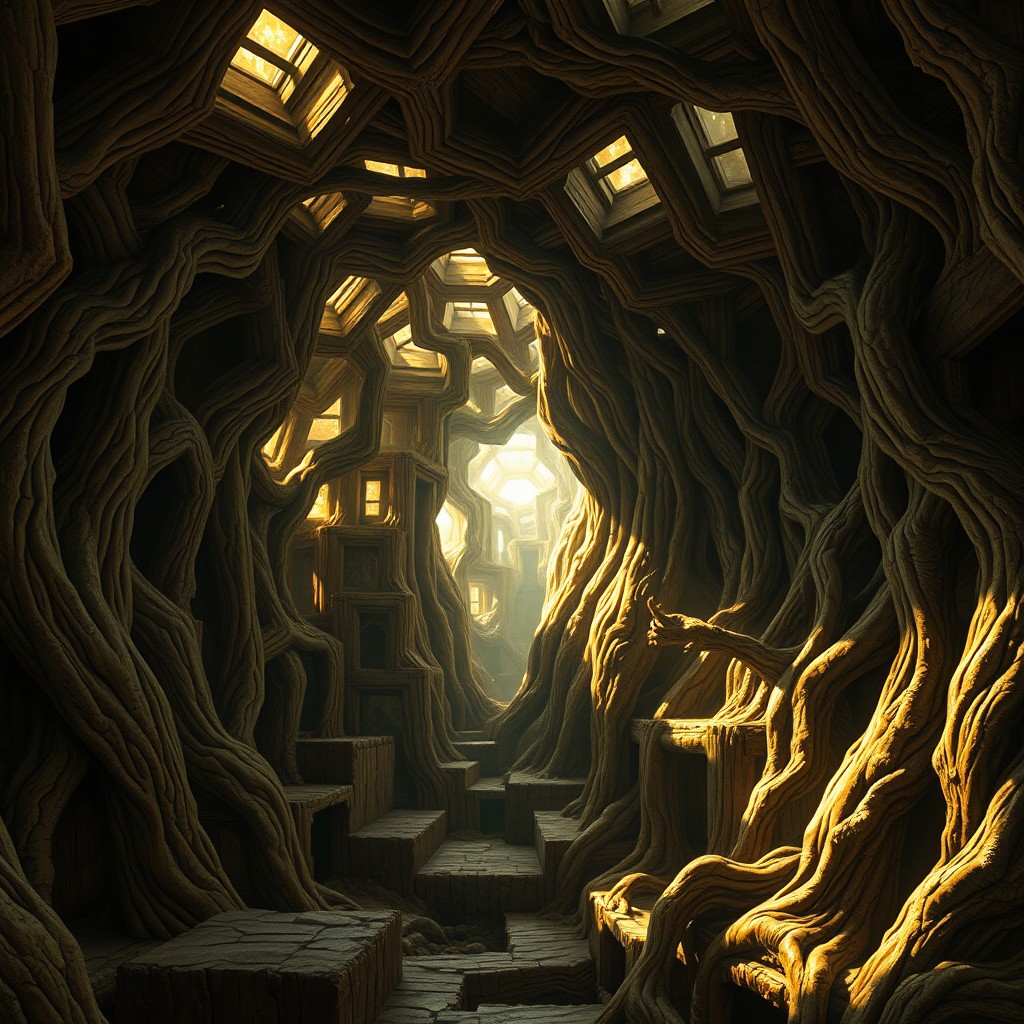A liminal space within the Great Deku Tree from The Legend of Zelda: Ocarina of Time—a hollow, ancient being frozen in time. The vast wooden chamber stretches endlessly upward, its twisted roots forming an intricate web of passageways and platforms. The air is heavy with the scent of damp moss and aged bark, as if the tree itself is breathing in slow, silent intervals. Faint golden light filters through cracks in the wood, casting long, wavering shadows. Floating dust particles dance in the still air, their movement unsettlingly slow. The corridors formed by the tree’s interior twist and spiral unnaturally, leading into deeper, darker hollows. A soft, eerie hum resonates through the empty space, neither natural nor mechanical. The atmosphere is neither welcoming nor hostile—just endlessly quiet, as if something was once here but has long since faded away. Though the tree is hollow, the feeling of being watched lingers, its presence unseen yet undeniable. The Arbre Mojo is alive, but no longer awake—a forgotten sanctuary, lost between worlds.
